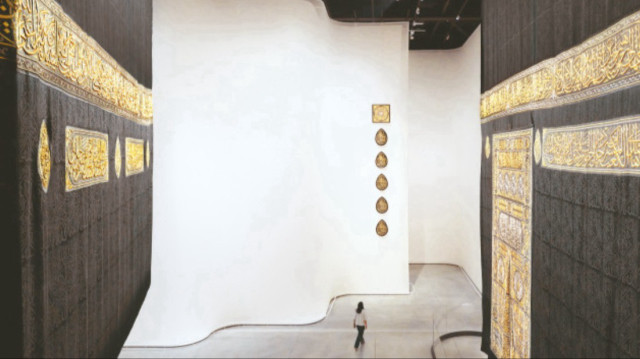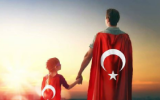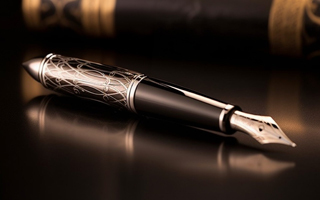
The 2nd Islamic Arts Biennale has once again gathered Islamic masterpieces from around the world in Jeddah. From illuminated manuscripts to the Kaba’s staircase, the Golden Gutter sent from Istanbul, and the intricate mosaics of Alhambra, the exhibition features a diverse collection of historical and artistic treasures. Among them are two rare maps drawn by the famed Ottoman traveler Evliya Çelebi.
Held in Jeddah, Saudi Arabia, the biennale has opened its doors to art lovers for the second time this year. Taking inspiration from the Quranic phrase “And Everything in Between”, which appears nearly 20 times in the holy book, the event stands out as the only international art exhibition that showcases both historical and contemporary Islamic works. Representing 21 countries—including Türkiye, Palestine, and even the Vatican—the exhibition features manuscripts, artifacts, weaponry, and contemporary art pieces.
Invited by the Diriyah Biennale Foundation, I had the opportunity to explore the biennale over two days at the King Abdulaziz International Airport’s Western Hajj Terminal. My experience was guided by the biennale’s artistic directors Julian Raby, Amin Jaffer, and Abdul Rahman Azzam, along with curators Mohannad Shono, Masa Al-Kutobi, Rizwan Ahmad, William Robinson, Heather Ecker, and Marika Sardar.
The biennale is structured around four main sections: Al Bidayah (The Beginning), Al Madar (The Cycle), Al Muqtani (The Collector), and Al Midhallah (The Canopy), spanning a vast 100,000-square-meter exhibition space. Each section and pavilion explores themes of divine creation, human perception, and artistic interpretation.
Visitors enter through the Islamic Garden, where they first encounter Musalla, an open-air prayer space that won the AlMusalla Award. Moving on to Al Bidayah, the first indoor exhibition area, visitors can see Qurans sent to the Kaba, the staircase used to enter the sacred structure, and the iconic Golden Gutter from Istanbul. Further along, the recently replaced Kaba coverings from last year are displayed, allowing visitors to walk among them and experience the atmosphere of tawaf.
The contemporary art pieces that follow offer new perspectives on Islamic themes. Italian artist Arcangelo Sassolino’s Memory of Becoming presents a continuously rotating surface where paint flows and transforms, symbolizing the constant evolution of existence. Another highlight is Asif Khan’s Quran, a stunning work crafted from glass.
The Al Madar section focuses on astronomy and science, showcasing manuscripts from renowned Islamic scholars. According to art director Abdul Rahman Azzam, many of these historical texts still contain valuable knowledge used today. Among the standout pieces are ancient Qurans in Hebrew and Greek, on loan from the Vatican, as well as manuscripts written by women.
Perhaps one of the most remarkable moments of the biennale is the display of two historic maps drawn by Evliya Çelebi. One illustrates the Euphrates and Tigris rivers in Qatar, while the other, typically housed in the Vatican, depicts the Nile River and its surroundings. This marks the first time these two maps have been exhibited side by side, offering a rare glimpse into the legacy of Ottoman cartography.
The Al Muqtani section showcases over 100 pieces from Sheikh Hamad bin Abdullah Al Thani’s collection and more than 200 items from the Furussiya Art Foundation’s collection. This area dazzles with exquisite jewelry, artifacts, and a collection of Ottoman swords, daggers, shields, and maps.
Moving further, visitors enter the Mecca and Medina section, where they can see the sacred coverings and chandeliers from the Prophet Muhammad’s tomb. One of the standout pieces is an intricately embroidered covering featuring the seal of Sultan Mahmud II. The Mecca section also houses Ahmed Mater’s Magnetism, a powerful artwork that metaphorically represents the Kaba as a magnetic force, drawing worshippers around it. This piece stands alone before the Kaba’s covering, creating a striking visual experience.
The vast exhibition space gives the impression of exploring a grand Islamic museum, taking visitors on a journey from Mecca and Medina to Palestine. Just outside the sections dedicated to Islam’s two holiest cities, the biennale presents Cut Flowers, a powerful installation paying tribute to Gaza.
Created by Kuwaiti artist Ala Younis, the artwork tells the story of fresh flowers—chrysanthemums, roses, and carnations—that were once exported from Gaza to the Netherlands. Due to Israeli occupation and blockades, these flowers now wither, symbolizing the struggles of the Palestinian people. The piece serves as a tribute to their resilience, capturing their ability to endure and find joy even in adversity.
Focusing on spiritual, sacred, and emotional dimensions, the 2nd Islamic Arts Biennale is an unmissable event. It is open to the public, free of charge, at the King Abdulaziz International Airport’s Western Hajj Terminal in Jeddah until May 25.
Hello, the comments you share on our site are a valuable resource for other users. Please respect other users and different opinions. Do not use rude, offensive, derogatory, or discriminatory language.
The floor is all yours.








